1387 Santo Mignosa & BC ceramics
Sea Salt, Lizards and Clay: My Ceramics from the Mediterranean to the Rockies
by Santo Mignosa, with a foreword by Debra Sloan
Vancouver: Granville Island Publishing, 2021
$25.95 / 9781989467329
Reviewed by LiLynn Wan
*
 Sea Salt, Lizards and Clay is both a memoir as well as an oeuvre of Santo Mignosa’s seven decades (and counting) working in clay. Mignosa’s words, as carefully chosen and streamlined as his abstract sculptures, tell the story of his lifelong passion and dedication as a ceramic artist. His story is bookended with a few short tributes by individuals who have worked closely with him, a timeline of his career, and his curriculum vitae. Most striking, however, is the plethora of images of Mignosa’s sculptures, pottery, and drawings, which place this work as much in the realm of art book as autobiography. Mignosa’s charmingly modest narrative feels thoroughly authentic, and the abundance of images reveals a mastery of his craft and medium.
Sea Salt, Lizards and Clay is both a memoir as well as an oeuvre of Santo Mignosa’s seven decades (and counting) working in clay. Mignosa’s words, as carefully chosen and streamlined as his abstract sculptures, tell the story of his lifelong passion and dedication as a ceramic artist. His story is bookended with a few short tributes by individuals who have worked closely with him, a timeline of his career, and his curriculum vitae. Most striking, however, is the plethora of images of Mignosa’s sculptures, pottery, and drawings, which place this work as much in the realm of art book as autobiography. Mignosa’s charmingly modest narrative feels thoroughly authentic, and the abundance of images reveals a mastery of his craft and medium.
When Mignosa moved to British Columbia from Italy in the late 1950s, the settler population in the province was experiencing a renaissance in art, craft, and design. Rapid population growth in Vancouver in the 1950s and 60s gave rise to an emerging cosmopolitanism, an art scene, and a market for art which did not exist prior. The nascent ceramics culture in British Columbia in this post-war Modernist period was dominated by the influence of Bernard Leach and Shoji Hamada. In keeping with the ideals of the British Arts and Crafts movement and of Mingei (the Japanese Folk Art Movement), the Leach-Hamada tradition advocated craft and functionality, and creating handmade objects for domestic use by ordinary people.

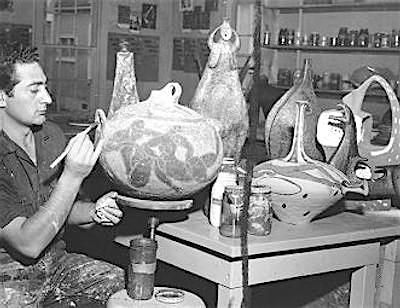
In contrast, Santo Mignosa’s work and approach to clay had deep roots in European traditions of high art. Although the Leach-Hamada influence was widespread and can be seen in some of his thrown work, Mignosa’s obsession with sculpting and drawing the human figure and his large-scale abstract sculptures stood in some antipathy to the more popular folk-art approach. The popularity of functional wheel thrown pottery made in the folk-art tradition, which began in the post-war era, reached a peak in the 1960s and 70s. During this same period, Mignosa was creating large, decorative, hand-built sculptural forms, influenced by the Etruscan and classical traditions of fine art and his formal art education in Florence, and he was also teaching painting, drawing, and sculpture. He worked and taught alongside studio potters who apprenticed Leach at the famous St. Ives studio in England — John Reeve, Glen Lewis, Michael Henry, and Ian Steele — and whose work in the Leach-Hamada tradition has become synonymous with ceramics culture in British Columbia in the 1960s-70s.
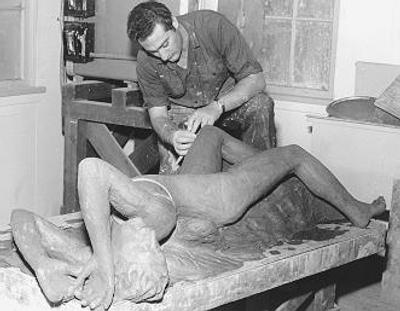
Mignosa’s work in this fundamental stage of British Columbia’s ceramic culture is lesser known than the Leach apprentices but is nonetheless strikingly important. In 1967, he wrote in Western Potter, the BC Potter’s Guild Newsletter, that “we do not have a tradition; we are the tradition on which our followers must build.”[1] Mignosa was aware that British Columbia did not have an Indigenous ceramics culture, and that the early ceramicists like himself who immigrated to the province starting in the 1920s and burgeoning in the 1950s through to the 70s were indeed pioneers. Predominantly immigrants from many places and backgrounds, bringing with them a wide range of approaches to their work and aesthetic philosophies, these founders of British Columbia’s ceramics culture were characterized by their diversity. Mignosa made a unique contribution to early ceramics culture in British Columbia in his unwavering identity as a sculptor in the context of the folk-art movement.
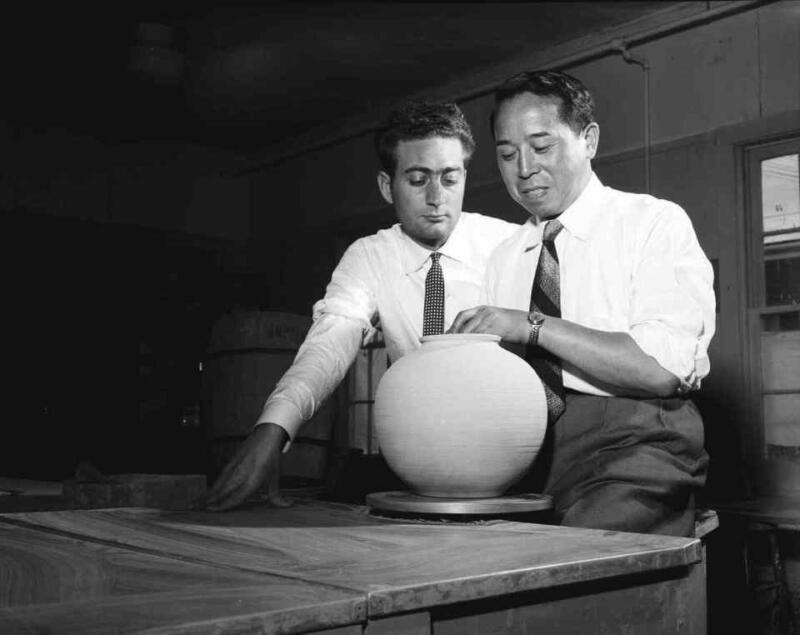
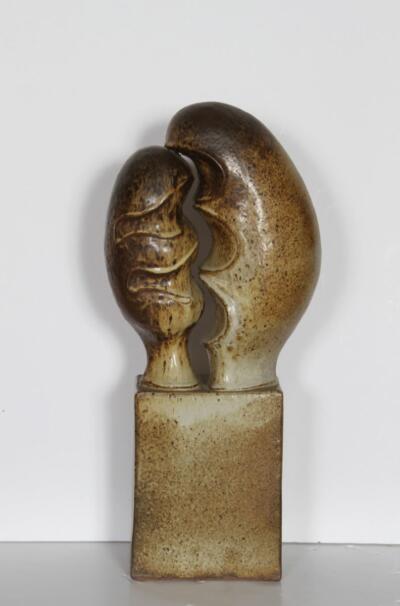
In his author’s statement, Mignosa identifies himself unequivocally as a sculptor. “If in this process I produce thrown objects,” he writes, “I remain a sculptor” (p. 31). Mignosa’s place in the history and development of craft in British Columbia is significant for this very reason, that he defines his work, both decorative and functional, as one and the same — as sculptural art. Soon after moving to Canada from Sicily, Mignosa became very involved in the local ceramics community, and pushed for ceramicists to exhibit their work both nationally and internationally, to great success. He encouraged studio potters like John Reeve and Tommy Kakinuma to successfully exhibit and compete nationally and internationally, even though this was inherently antithetical to the Leach-Hamada tradition which upheld the anonymity of the craftsman. Throughout his working career in British Columbia and Alberta, Mignosa exhibited in Italy, Belgium, Poland, the Czech Republic, Japan, the United States, and across Canada, bringing recognition to Western Canadian ceramics.
In the context of post-war Modernism and the folk-art movement that dominated the ceramics scene in British Columbia, Mignosa was an unapologetic innovator, whose work drew national and international acclaim. At a time when many potters in the province were making ceramics for everyday use in the home, as one facet of “modern living,” Mignosa was pursuing large scale sculpture. The collection of photographs in this memoir demonstrates the breadth of his sculptural skills, in exploring the human figure in the Renaissance tradition and in creating Modernist abstract forms. In his memoir, Mignosa describes both his pottery and his abstract renditions as a continuation of his studies of the human figure. He speaks of art as the awareness of visual energy. His renditions of the human figure convey so much expression, life, emotion, and movement. We see this essence of humanity pared down to line and form particularly clearly in his nudes and abstracts, and in this lies a timelessness and universal appeal to his work.
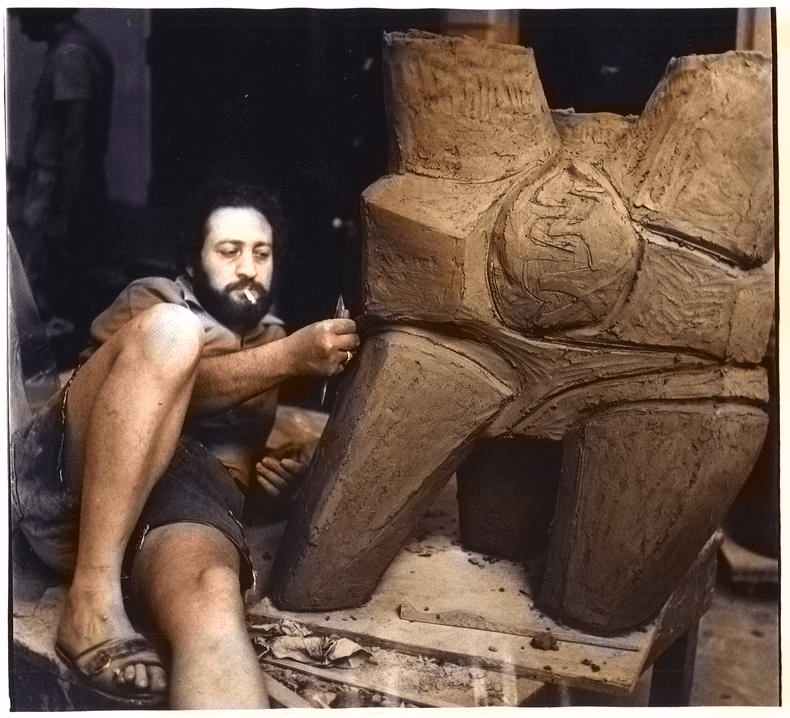
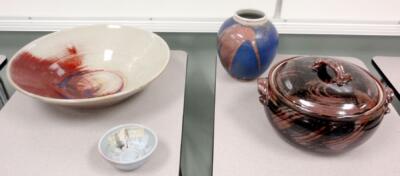
Mignosa makes clear in his writing that his dedication to exploring sculptural forms and the human figure throughout his life connects him to the broad trajectory of the ancient and classical art world and his own roots in Italy. However, his influence on modern ceramics culture could have been better established in this work with the addition of some context of the contemporary history of art in Western Canada. While the collection of photographs of Mignosa’s work is rich, they would be even more insightful if they were dated and titled, so that the reader could see the chronological progression of his work. Even so, Sea Salt, Lizards and Clay is a lovely tribute to the breadth and depth of knowledge and skill that Santo Mignosa has acquired in his lifetime of working as a ceramic artist and is especially meaningful because it is the artist’s story and creative process told in his own words.



*

LiLynn Wan is a full-time potter currently living in Portuguese Cove, Nova Scotia. She produces functional dinnerware, kitchenware, and tea-ware. Her work is inspired by classical Chinese, Korean, and Japanese ceramics, aesthetics, and philosophies of craft. She holds a PhD in Canadian history from Dalhousie University. Editor’s note: LiLynn Wan has also reviewed books by Brooke Xiang & Tyler Mark, Jim Wong-Chu, and Tina Loo for The Ormsby Review.
*
The British Columbia Review
Publisher and Editor: Richard Mackie
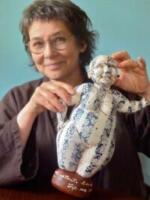
Formerly The Ormsby Review, The British Columbia Review is an on-line journal service for in-depth coverage of BC books and writers. The Advisory Board consists of Jean Barman, Wade Davis, Robin Fisher, Cole Harris, Hugh Johnston, Kathy Mezei, Patricia Roy, Maria Tippett, and Graeme Wynn. Provincial Government Patron (since September 2018): Creative BC. Honorary Patron: Yosef Wosk. Scholarly Patron: SFU Graduate Liberal Studies.
“Only connect.” – E.M. Forster
*
Endnotes:
[1] Debra Sloan, “Origins of a Ceramic Culture: The First Fifty Years of the BC Potters Guild 1955-2005” (August 2005)

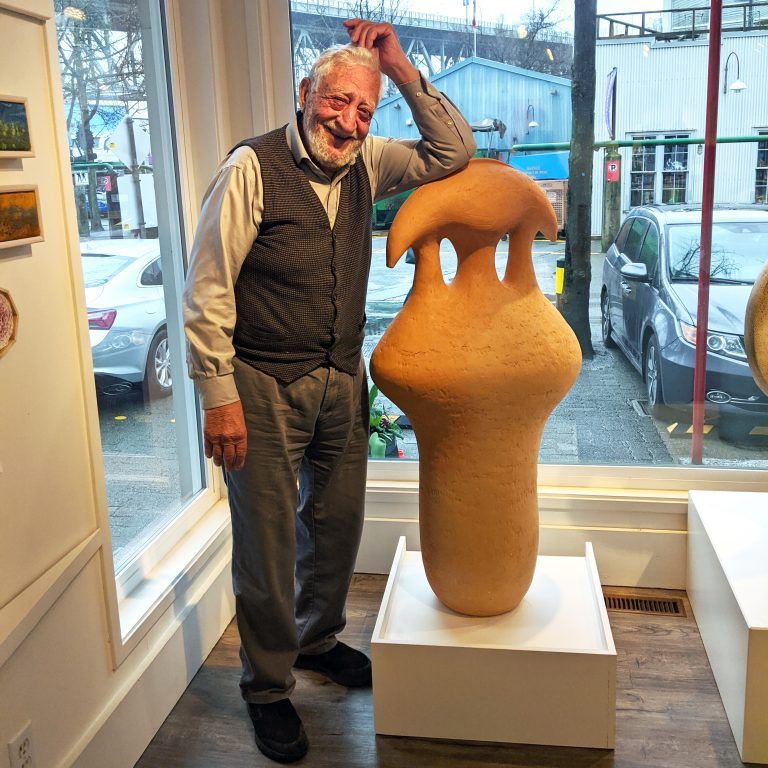
3 comments on “1387 Santo Mignosa & BC ceramics”
It sounds so good. I look forward to reading it.
The quality of this book is a tribute to Susan Gorris, Santo’s partner and an artist and ceramicist in her own right.